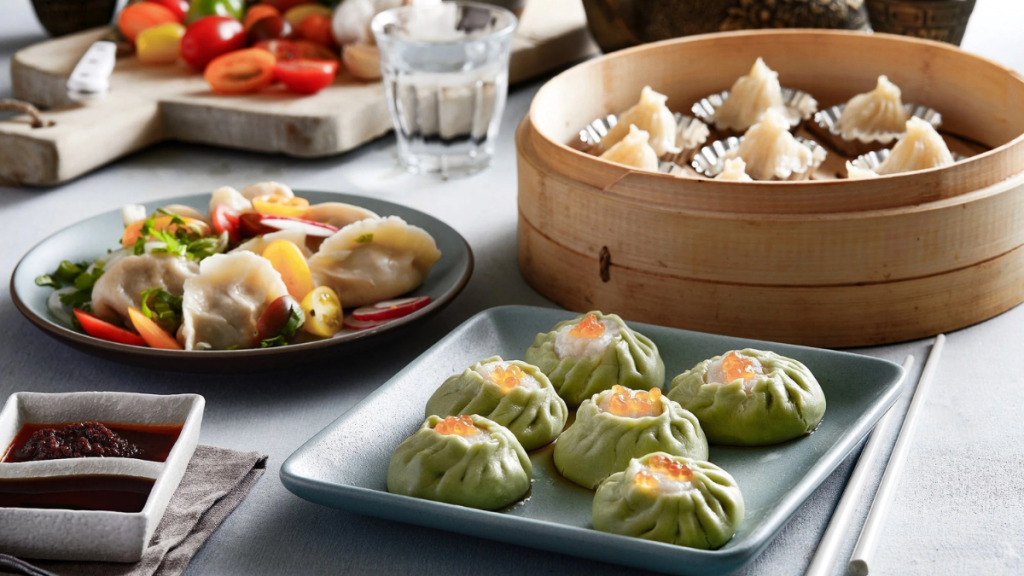Few dishes are as universally beloved – or as endlessly diverse – as the humble dumpling. Across continents and cultures, dumplings have been stuffed, shaped, steamed, boiled, and fried in countless delicious ways. Whether you’re a seasoned foodie or a curious newcomer to global cuisine, exploring the world of dumplings is a flavour-filled journey you won’t want to miss.
For those looking to recreate these mouthwatering dishes at home or cater for a crowd, it’s worth checking out options to bulk buy dumplings from trusted suppliers who specialise in authentic flavours. Here are 10 standout dumplings you simply must try – and a little background on where each one originates.
Jiaozi (China)
Jiaozi are the quintessential Chinese dumpling – crescent-shaped parcels typically filled with minced pork, cabbage, and garlic chives. Often served with vinegar and soy dipping sauce, jiaozi are especially popular during Lunar New Year celebrations for their symbolism of wealth.
Gyoza (Japan)
A Japanese adaptation of jiaozi, gyoza feature a thinner wrapper and are often pan-fried to create a crispy bottom and juicy centre. These savoury morsels are commonly filled with pork, garlic, and ginger and served as a side dish in ramen shops across Japan.
Mandu (Korea)
Korean mandu come in many forms – steamed, boiled, or fried – and can be enjoyed in soups or on their own. Common fillings include pork or beef with tofu, kimchi, and bean sprouts. Mandu are a traditional comfort food that often make an appearance during Korean holidays.
Momos (Tibet/Nepal)
Momos are a Himalayan staple that have made their way into street food culture across India and Nepal. These dumplings are typically steamed and filled with spiced vegetables or meat. A fiery chilli dipping sauce usually accompanies them for an extra kick.
Pelmeni (Russia)
Pelmeni are small, round dumplings filled with minced meat, onion, and garlic, boiled and often served with sour cream or vinegar. They’re a cold-climate staple in Russia and Siberia, offering hearty, warming sustenance in the chilliest months.
Pierogi (Poland)
Polish pierogi are semi-circular dumplings that can be sweet or savoury. Traditional versions include fillings like potato and cheese, sauerkraut and mushroom, or even sweetened berries. They can be boiled, then pan-fried in butter for extra richness.
Khinkali (Georgia)
Khinkali are large Georgian dumplings traditionally filled with spiced meat and broth. Eaten by hand, these juicy dumplings require a particular technique: hold the top knot, take a bite, slurp the broth, and then finish the rest.
Samosas (India)
Though technically not a dumpling by classic definition, samosas deserve a mention for their folded dough exterior and savoury fillings. Triangular and deep-fried, samosas are commonly filled with spiced potatoes, peas, and lentils, or minced meat, and are a popular street snack across India.
Ravioli (Italy)
Italy’s answer to the dumpling, ravioli are small pasta pillows usually filled with cheese, herbs, or meat, then boiled and served with sauce. While not typically hand-held, ravioli represent the European tradition of stuffed dough-based delicacies.
Empanadas (Latin America)
Empanadas straddle the line between dumplings and hand pies, but their dough-wrapped fillings and global appeal place them squarely in this list. Popular across Latin America, they’re often filled with beef, chicken, or cheese and either baked or fried.
Bon Appetit!
Dumplings are a delicious expression of culture and history, lovingly made in kitchens and street stalls the world over. Whether you’re experimenting at home or seeking an easier option to share with friends and family, you can explore the incredible diversity of global dumpling traditions – all from the comfort of your own kitchen.

